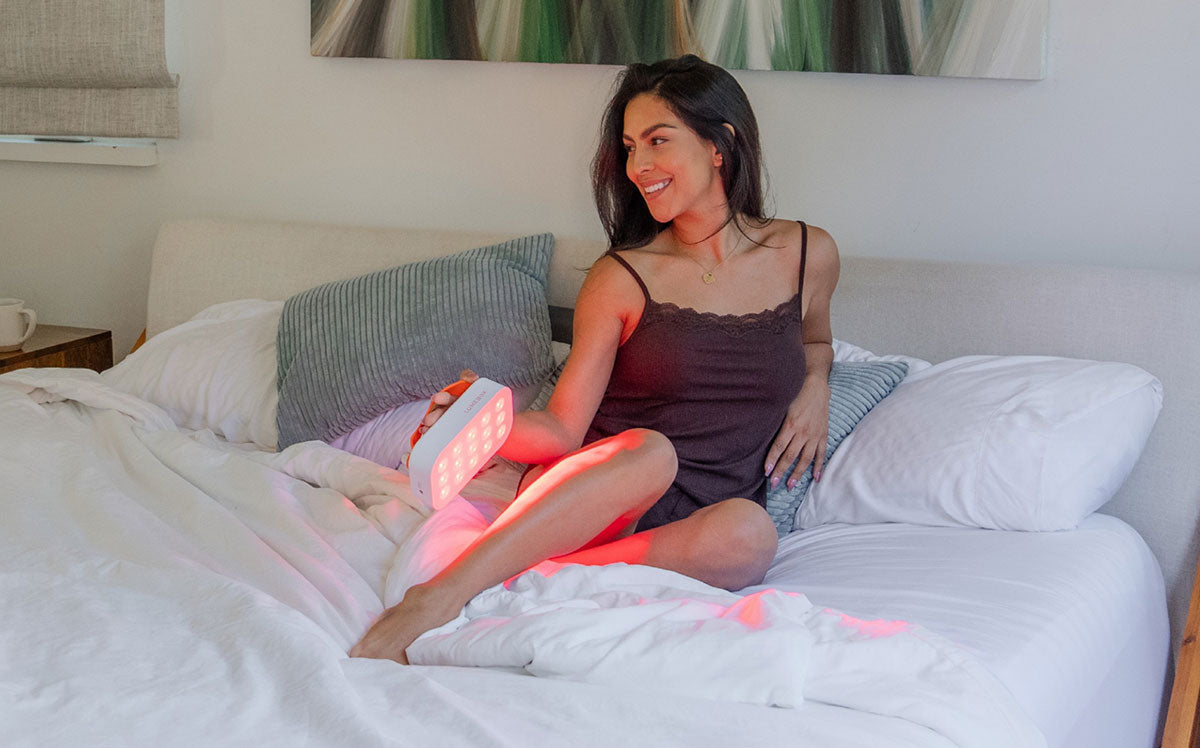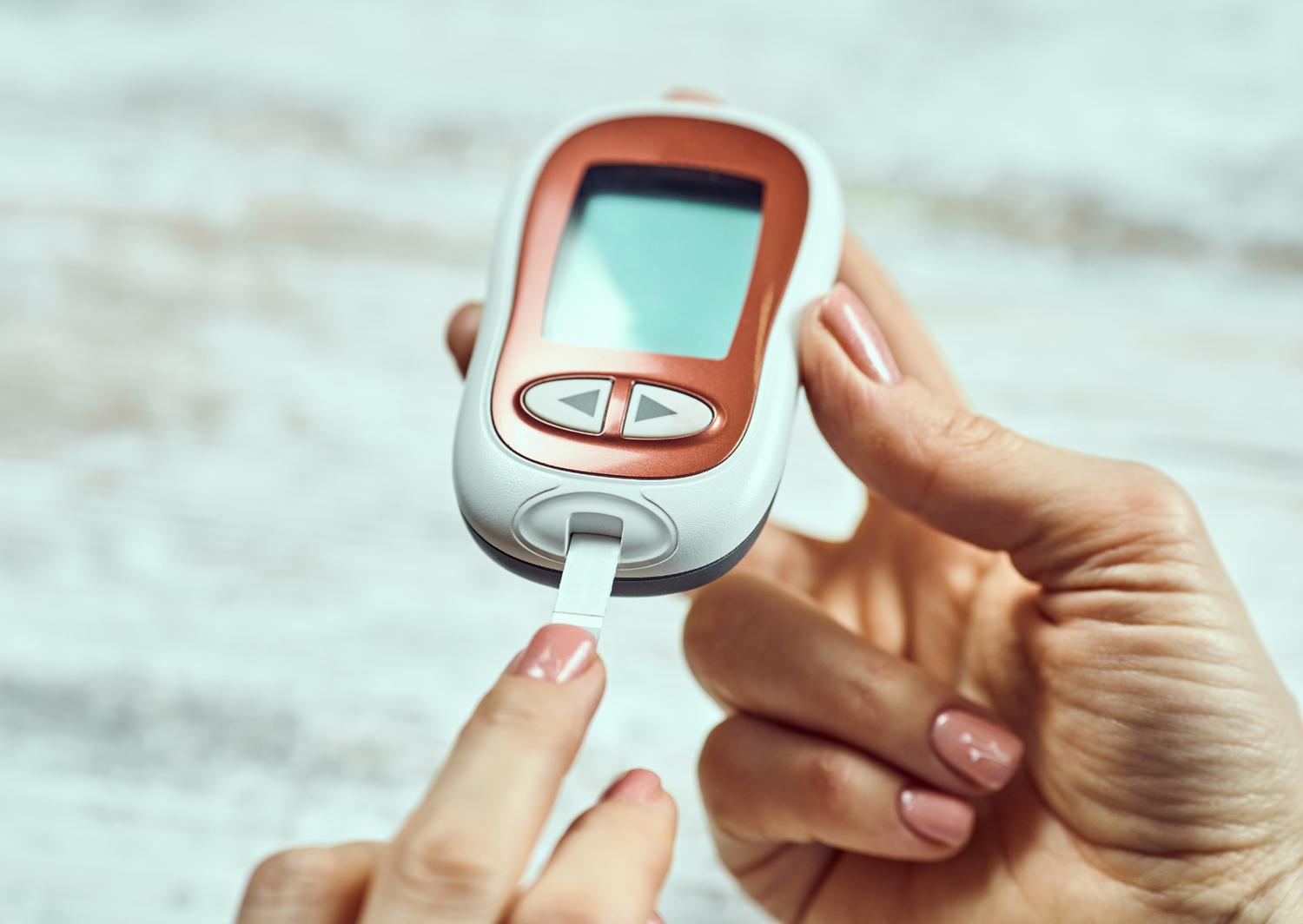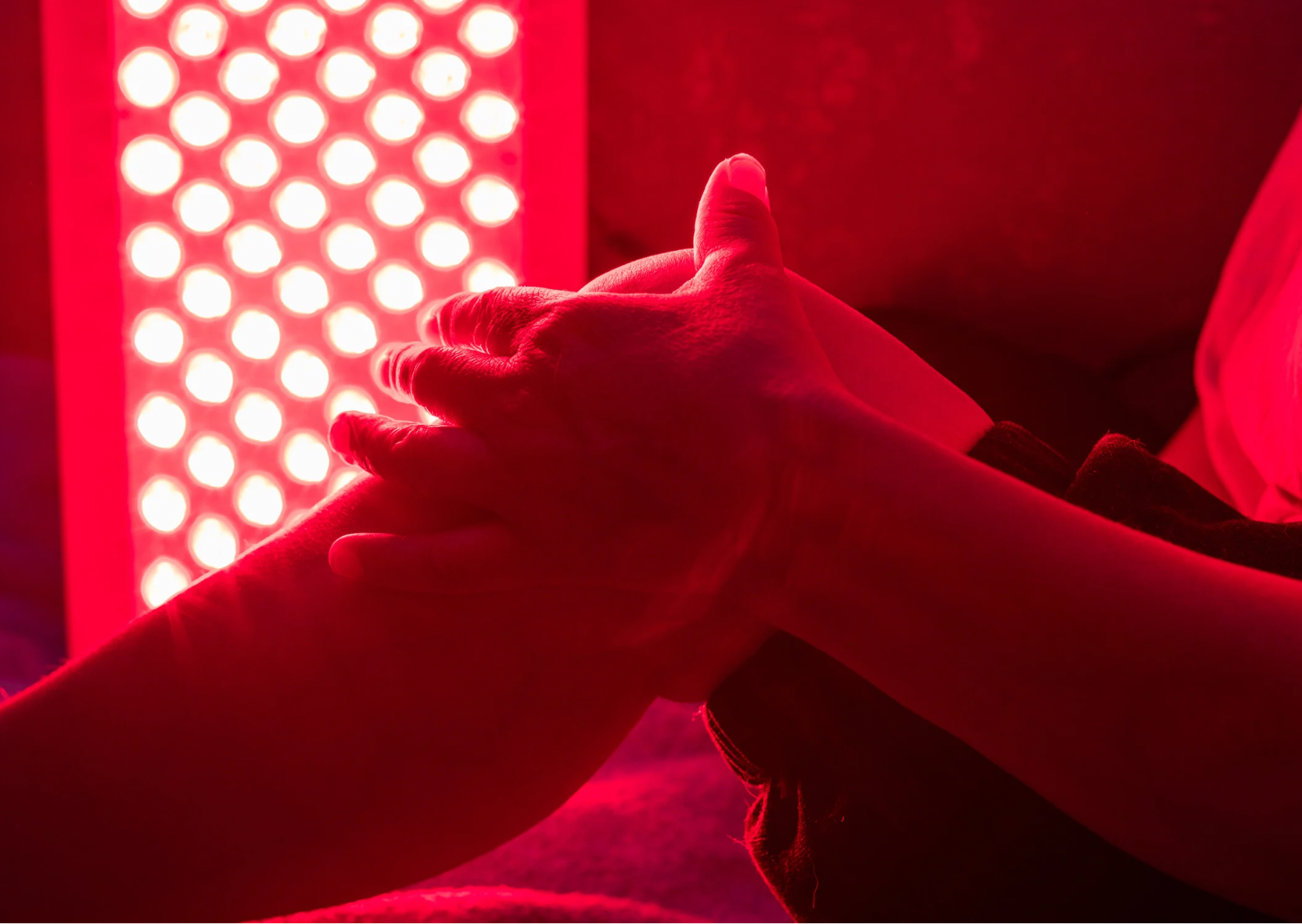Blood sugar (or blood glucose) is all the rage in the realm of wellness these days, and there’s a reason why.
High blood sugar levels can lead to downstream health issues like inflammation, accelerated skin aging, increased risk of cancer and stroke, and weakened immune health. As a result, maintaining a healthy blood sugar balance is vital for overall metabolic health.
You’re probably on the blood sugar rollercoaster.
Here are 2 things to remember:
- It is NORMAL for your blood sugar to rise after a meal. This is not harmful and is an expected consequence of eating.
- That said, how much it goes up and how long it stays elevated determines the health consequences. Prolonged and ultra-high levels lead to undesirable health consequences.
What happens when we eat food?
When we eat a meal, our blood sugar goes up. Insulin is the key that opens the door to allow sugar in our blood to get inside the cells, where mitochondria then convert it into energy (ATP). When insulin doesn’t work to open that door, our blood sugar remains high and this is what leads to type 2 diabetes, fundamentally affecting our cellular health.
Here’s how it works:

The more sensitive our tissues are to insulin, the better our blood sugar control and, subsequently, our metabolism.
Insulin & Diabetes
In Type 2 diabetes, insulin doesn’t work properly, meaning it can't properly unlock our cells to allow blood glucose to enter.

Many factors can contribute to this, including genetics, lifestyle choices (like what we eat and how we sleep), and environmental factors like toxicants found in everyday products, such as BPA and phthalates.
What can we do to support blood sugar regulation?
Diet
- Manage your intake of refined sugar; we are not talking about whole fruits. We are talking about ‘added sugar’ and items that turn into sugar when we eat them, like fruit juices.
- Incorporate fiber into your meals - "Clothe your carbs" by adding fiber, protein, or healthy fats to sweet or starchy foods. This slows down the glucose spike caused by the rapid digestion of sugars.
- Break your fast with protein, healthy fats, and complex carbs (whole grains like buckwheat, steel-cut oats instead of cereal, and instant oats). Your first meal of the day is important to stabilize blood sugar and set your energy levels off to a good start! It also helps curb appetite throughout the day.
- Studies have shown that calcium, magnesium, chromium, vitamin D, and omega-3 fatty acids may also support healthy insulin function [1].
It’s all about encouraging the body to learn how to burn fat, and not only rely on glucose. When our body struggles to burn fat, this can be a sign of mitochondrial dysfunction, highlighting the essential role mitochondria play in our metabolic health.
Movement
Exercise can potentially lower blood glucose levels [2, 3] by:
- Increasing insulin sensitivity, which allows your muscle cells to effectively use insulin to take up glucose during and after exercise.
- Use glucose for energy when your muscles contract during physical activity, whether insulin is available or not [4].
But it doesn’t require hours of hard exercise either. Even just a short walk after a meal can curve the spike in blood sugar dramatically. In this 2022 meta-analysis of 7 randomized crossover trials, participants who walked for just 2–5 minutes every 20–30 minutes after eating saw a 17% average reduction in post-meal blood sugar compared to prolonged sitting [5].
The Power of Light
Light has profound effects on health. Studies have shown how exposure to bright sunlight might improve insulin sensitivity [6] - this means it may help your body use insulin more efficiently.
A study on 1,300 people [6] discovered that for the people who spent more time in bright sunlight during the week before their blood test, their blood showed increased insulin sensitivity. This means the sunlight might’ve helped their bodies use insulin better.
The better our blood sugar control, the lower our fasting insulin. Fasting insulin is often used as a marker for how well our tissues respond to insulin, otherwise known as insulin sensitivity. In this study, they showed that for each hour of bright sunlight exposure, fasting insulin decreased by 1.27%.
So getting some healthy exposure to sunlight (at the right time) without getting burnt is good, not only for our vitamin D levels, but could potentially help with our blood sugar regulation too.
However, skin damage and aging are real concerns when it comes to sun exposure, and blue light exposure from screens can also contribute to these issues. So, if you want to harness the healing power of sunlight without the harmful UV rays, there is another solution.
Red Light!
Building on the benefits of sunlight, red LED light therapy, also known as photobiomodulation, has shown promising outcomes in some recent clinical trials on blood sugar regulation. However, since the research is still in its early stages and based on small participant groups, we're not recommending this as a “treatment” for diabetes or pre-diabetes. Please continue following your doctor's medical advice - we’re just sharing this information because it's so interesting!
Study #1:
Dr. Glen Jeffery’s research highlighted significant findings where red LED light notably reduced blood glucose levels during clinical tests.
In his randomized control study [7], he utilized:
- 670 nm wavelength LED light (this is visible red light)
- An irradiance of 40 mW/cm2, delivered for 15 minutes, applied to the upper back (covering 4% of the subjects’ total skin surface area)
- Positioned 40 cm from the body.
One group (15 people) received the red light treatment, and the other half received a placebo. Both groups were tested for their baseline fasting oral glucose tolerance (to measure the rise and fall of their blood glucose after consuming sugar). The fasting oral glucose tolerance was then measured after patients received red light therapy 45 minutes before consuming a glucose solution.
“When comparing red light against placebo interventions, 670 nm light reduced the elevation in blood glucose by 27.7% over the 2 hours of fasting oral glucose tolerance tests”.
In other words, the group receiving red light therapy experienced almost a 30% decrease in blood glucose, a significantly greater reduction in blood glucose than the placebo group which didn't receive red light therapy.

Note: this study was published recently (2023) and has not been extensively peer-reviewed.
While the field of red light therapy and its effects on blood glucose is still developing, it shows promising signs. particularly in how it might influence the efficiency of mitochondria. Previous studies, both on humans using laser devices and on animal models using LED lights, have shown similar results, suggesting that red light therapy may offer promise for metabolic health, particularly in supporting ATP production in cells.
Study #2:
This study looked at how red light therapy can help lose body fat when paired with exercise [8]. 64 obese women received near-infrared laser light (808nm) for 16 minutes total (8 minutes to the abs and quads, then 8 minutes to the glutes and back of the thighs) three times per week for 16 weeks. They received the light treatment each time immediately after exercise.
The primary outcome of this study was fat loss, but they found that “physical training plus phototherapy was more effective than physical training alone in reducing the HOMA-IR index”. The HOMA-IR index measures insulin resistance, which indicates how sensitive the body is to changes in blood sugar levels.
So, participants who underwent both physical training and red light therapy experienced “an improvement in insulin resistance by decreasing insulin concentration and HOMA-IR index” when compared to the exercise plus SHAM group. (Reductions in body fat mass were also observed.) These findings highlight the importance of managing insulin and blood sugar levels in achieving fat loss goals.
Reducing your blood sugar levels may not only be influenced by your diet and exercise routine but also by the effects of light, particularly red here, which introduces another dimension.
Integrating Red Light Therapy into Daily Life
Red light therapy is becoming a more popular tool for skin health, muscle and joint health, inflammation, and more.
Given that red light therapy is known to target the mitochondria to support ATP production, it stands to reason that it might aid in blood sugar regulation, as the conversion of glucose from our food to energy occurs within these cellular structures.
While the benefits of red light therapy are supported by increasing scientific evidence, it's important to approach this treatment method thoughtfully - it's not a standalone cure but a complementary approach that should be integrated with guidance from health professionals.
LUMEBOX stands out because it is powerful, portable, and has been tested for safety and efficacy.
Your wellness journey is just a light session away!
New to red light therapy? Download our free eBook to help you choose the best device.
Already have a LUMEBOX? Download our 6 time-saving tricks guide!
Disclaimer: It’s important to note that the devices mentioned in these studies were not LUMEBOX, and the specific application of LUMEBOX for blood glucose control has not yet been tested. The conclusions made in this blog post are not definitive, and many of the findings we discussed are preliminary. Further research is needed before we can provide more concrete recommendations, so make sure to check with your doctor before starting any new treatments.
References:
[1] López-Alarcón, M., Perichart-Perera, O., Flores-Huerta, S., Inda-Icaza, P., Rodríguez-Cruz, M., Armenta-Álvarez, A., Bram-Falcón, M. T., & Mayorga-Ochoa, M. (2014). Excessive refined carbohydrates and scarce micronutrients intakes increase inflammatory mediators and insulin resistance in prepubertal and pubertal obese children independently of obesity. Mediators of inflammation, 2014, 849031. https://doi.org/10.1155/2014/849031
[2] Richter, E. A., Derave, W., & Wojtaszewski, J. F. (2001). Glucose, exercise and insulin: emerging concepts. The Journal of physiology, 535(Pt 2), 313–322. https://doi.org/10.1111/j.1469-7793.2001.t01-2-00313.x
[3] Stanford, K. I., & Goodyear, L. J. (2014). Exercise and type 2 diabetes: molecular mechanisms regulating glucose uptake in skeletal muscle. Advances in physiology education, 38(4), 308–314. https://doi.org/10.1152/advan.00080.2014
[4] Holloszy, J. O. (2005). Exercise-induced increase in muscle insulin sensitivity. Journal of Applied Physiology. https://doi.org/A0123-5
[5] Buffey AJ, Herring MP, Langley CK, Donnelly AE, Carson BP. The Acute Effects of Interrupting Prolonged Sitting Time in Adults with Standing and Light-Intensity Walking on Biomarkers of Cardiometabolic Health in Adults: A Systematic Review and Meta-analysis. Sports Med. 2022 Aug;52(8):1765-1787. doi: 10.1007/s40279-022-01649-4. Epub 2022 Feb 11. PMID: 35147898; PMCID: PMC9325803.
[6] Noordam, R., Ramkisoensing, A., Loh, N. Y., Neville, M. J., Rosendaal, F. R., Willems van Dijk, K., van Heemst, D., Karpe, F., Christodoulides, C., & Kooijman, S. (2019). Associations of Outdoor Temperature, Bright Sunlight, and Cardiometabolic Traits in Two European Population-Based Cohorts. The Journal of clinical endocrinology and metabolism, 104(7), 2903–2910. https://doi.org/10.1210/jc.2018-02532
[7] Powner, M. B., & Jeffery, G. (2023). Optical stimulation of mitochondria reduces blood glucose levels. Preprint. https://doi.org/10.21203/rs.3.rs-3275287/v1
[8] Sene-Fiorese, M., Duarte, F. O., de Aquino Junior, A. E., Campos, R. M., Masquio, D. C., Tock, L., de Oliveira Duarte, A. C., Dâmaso, A. R., Parizotto, N. A., & Bagnato, V. S. (2015). The potential of phototherapy to reduce body fat, insulin resistance and "metabolic inflexibility" related to obesity in women undergoing weight loss treatment. Lasers in surgery and medicine, 47(8), 634–642. https://doi.org/10.1002/lsm.22395





